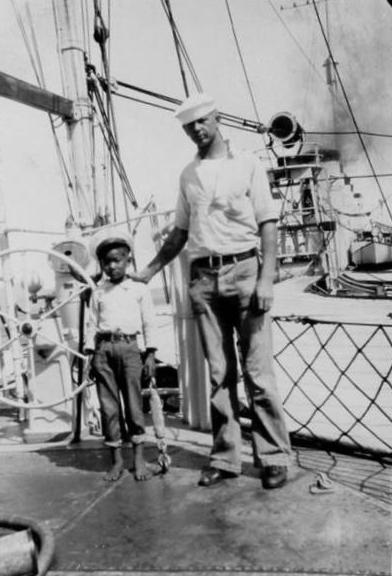
Figure 1.--This snapshot shows a Chinee boy adopted as a mascot aboard one of the U.S. Navy China gunboats uring the 1930s. The ship was participating in Asiatic Fleet torpedo training exercizes near Chefoo, China. |

|
The U.S. Navy Asiatic Fleet was one of the Navy's geographic fleets and active during the first half of the 20th century. The fleet was tsked with porotecting U.S. interests in the western Pacific, meaning primrily the Philippine Islands. It also deployed gunboat to protect American citizens and interests in China. The Asiatic fleet was created when its predecessor, the U.S. Navy Asiatic Squadron, was upgraded to fleet status (1902). The Admirals changed their mind and downgraded it to the First Squadron of the U.S. Pacific Fleet (1907). But then changed their minds again, reestablishing fleet status (1910).
The U.S. Asiatic Fleet, based in the Philippine Islands, had full fleet status, organizationally independent of the U.S. Navy Pacific Fleet, which was based in San Diego on the United States West Coast. Although the Asiatic Fleet had fleet status, it was much smaller than the other U.S. Navy fleet organizations. And it ranked below what most navy experts would consider to be a serious fleet, having very few heavy units. Even so, the Asiatic Fleet beginning during World War was given to a four-star admiral, the highest naval rank at the time (1916). The U.S. Navy was only authirized four four-star admirals. Thus the Asiatic Fleet was a small, light force, it had considerable prestige. And commonly, the poition was more influential and had more authority than the U.S. Ambassador to China. [Tolley] The Pacific Fleet was moved to Pearl Harbor in Hawaii as a move to address increasing Japanese aggresiveness (1940). American war planning called for the Pacific Fleet to sortee west and come to the aid of the Asiatic Fleet in time of war to defend the Philippines and battle the Imperial Navy in a major fleet enggement. After Pearl Harbor, the Pacific Fleet's battleships were sunk or destroyed. As a result, the small Asiatic Fleet had to fight it out with only avail ships from the Dutch and Australian Navy. Much of the U.S. Asiatic Fleet was destroyed in the resulting sharp battles with the Japanese Imperial Navy (December 1941-February 1942). The U.S. Navy
disolved the Asiatic Fleet and incorporatd the surviving units into the battered U.S. Pacific Fleet.
Tolley, Kemp. 'Forward' in W.G. Winslow. The Fleet the Gods Forgot: The U.S. Asiatic Fleet in World War II (Annapolis, Maryland: Naval Institute Press, 1982).
Navigate the CIH World War II Page:
[Return to Main China Station page]
[Return to Main World War II Pacific naval campaign]
[Return to Main World War II naval campaign page]
[Return to Main Japanese Navy page]
[Biographies]
[Campaigns]
[Children]
[Countries]
[Deciding factors]
[Diplomacy]
[Geo-political crisis]
[Economics]
[Home front]
[Intelligence]
[POWs]
[Resistance]
[Race]
[Refugees]
[Technology]
[Totalitarian powers]
[Bibliographies]
[Contributions]
[FAQs]
[Images]
[Links]
[Registration]
[Tools]
[Return to Main World War II page]
[Return to Main war essay page]
[Return to CIH Home page]
